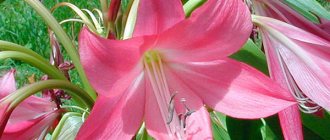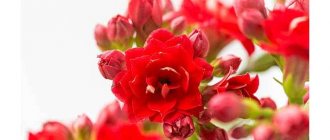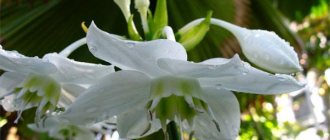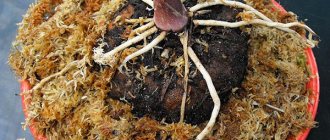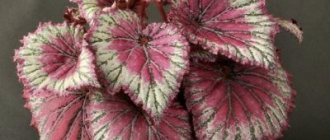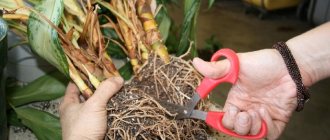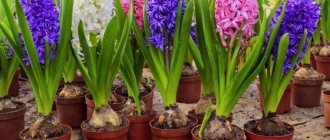Many plants attract the attention of a wide variety of insects and people with their charming beauty and juicy aroma. But it so happens that in nature there are species with a rather unpleasant, even disgusting, odor.
After reading this article, you can find out what the smelliest flower in the world is called and what it is. We will also tell you about what other flowers with unpleasant odors exist. Below are descriptions of some of the most interesting of them.
general information
The main feature of some plants is their unpleasant odor. By the way, in nature there are specimens whose appearance corresponds to the piquant smell given to them by nature: sometimes such flowers look like pieces of spoiling meat. However, among them, oddly enough, there are also surprisingly beautiful, original representatives.
Below are unusual plants that belong to the group of the most smelly flowers in the world. By the way, many of them, in addition to their unique smell, are also huge in size.
The largest carnivorous flower in the world
Among the largest flowers in the world, there is one amazing plant that we cannot help but mention and show a photo of. This is Nepenthes Raja. It is a jug with a volume of about 2 liters filled with a viscous liquid. With its help, prey is captured in the form of large beetles, flying insects, mice and even lizards.
Would you like to have such flowers in your garden? Would your favorite girl appreciate such a gift? Tell us in the comments and share the article with your friends, they probably haven’t seen this before.
The smelliest plant
This flower can rightfully be included in the list of plants with the most unpleasant odor. Its peculiarity is that it is very large.
What is the name of the stinking flower? The original Rafflesia Arnoldi, also known as the corpse lily, grows on the islands of Kalimantan, Sumatra and Java. This amazing plant consists of just one flower. Moreover, it has neither roots nor leaves. This relic has no analogues in the whole world.
The flower is also notable for its amazing colors. It consists of rather fleshy, thick petals of a rich red color with growths of white shades in the form of warts. Undoubtedly, rafflesia is not only a beautiful stinking flower. It is also the largest in the world, because its diameter reaches 2 meters and its average weight is 11 kilograms.
In essence, it is a parasitic plant. Not every person can admire such a miracle, because it is truly a rare flower. It grows only in the tropical forests of Malaysia, and even there there are practically no specimens left. But the main reason for the impossibility of admiring this unique plant for some time lies in something completely different - its terrible aroma.
Not many agree that this stinking flower is beautiful. But the concept of “beauty”, as you know, is relative. The aroma of rafflesia is reminiscent of the smell of rotting meat. This property of the flower attracts a huge number of insects, for example, flies.
What is it for? The plant does not feed on insects, but uses them in this way for pollination. A fly that sits on a flower, falling in pollen, flies to the same plant - this is how pollination occurs. Another interesting fact is that the seeds of the plant are distributed by elephants.
Greek flower suspected of attracting pollinators with the smell of dead insects
Image of shoot, flowers and rhizome of Aristolochia microstoma
Enio Nardi / Webbia: Journal of Plant Taxonomy and Geography, 1991
Scientists have discovered that the flowers of the plant Aristolochia microstoma
emit volatile compounds characteristic of the smell of decaying insects.
Researchers have suggested that this smell of the plant attracts pollinators - humpback flies. This is the first known case of a plant luring pollinators with the scent of dead invertebrates rather than vertebrates. The study was published in the journal Frontiers in Ecology and Evolution
.
Most angiosperms are pollinated by insects. The interaction between plant and pollinator is usually characterized as mutualism, that is, a mutually beneficial partnership. However, some plants deceive pollinators - to attract them they mimic (both visually and chemically) as a sexual partner or a source of food for larvae or adults. For example, rafflesia flowers imitate the sight and smell of decaying meat, thereby attracting carrion flies ( Calliphoridae
), since the larvae of these insects develop in carrion.
Another example is the representatives of the genus Aristolochia
. These plants lure pollinators with the scent of carrion or decaying plant debris, but also have specialized trap flowers. During the female flowering phase, the pollinator enters the tubular perianth, which is covered inside with forward-pointing hairs. They prevent the insect from crawling back out. The pollinator transfers pollen to the stigma, after which the flower enters the male phase, and the insect is covered with a new portion of pollen. Then the hairs dry up and the pollinator escapes the flower to start all over again.
Most Aristolochia species have large flowers located high above the ground. But the Greek endemic A. microstoma
the flowers are inconspicuous and located on the ground or between stones. Scientists assumed that pollinators could be ants and other insects living on the surface of the earth, but this has not been studied until now.
Aristolochia microstoma flowers
Rupp et al. / Frontiers in Ecology and Evolution, 2021
Share
Biologists from Austria, Great Britain and Germany, led by Thomas Rupp from the University of Salzburg, decided to identify the pollinators of A. microstoma
.
To do this, they collected 1,457 A. microstoma
from three different locations and then examined the 248 arthropods they found in the flowers.
Among them were mites, millipedes, springtails, and beetles, but most were dipterans from the families of humpback flies ( Phoridae
), detritus flies (
Sciaridae
), ballmouths (
Sphaeroceridae
) and fruit flies (
Drosophilidae
).
The researchers found pollen grains only in dipterans, and only representatives of humpbacks (25 individuals) were found with pollen in flowers with the female flowering phase. This means that these insects were true pollinators. Morphological studies and DNA barcoding showed that 24 individuals belong to the species Megaselia scalaris
and
the M. angusta/longicostalis
, and one individual belongs to the species
Conicera similis
.
Insects from Aristolochia microstoma
.
A, B—female Megaselia sp.
(
Phoridae
) with pollen;
C, D - male of an unidentified Sciaridae
without pollen.
Rupp et al. / Frontiers in Ecology and Evolution, 2021
Share
The scientists then used gas chromatography coupled with mass spectrometry to analyze the volatile compounds in A. microstoma flowers.
A total of 16 substances were found, but only three of them were found in significant quantities: dimethyl disulfide (40 to 79 percent, depending on the study site), 2,5-dimethylpyrazine (8 to 47 percent) and dimethyl trisulfide (1 to 5 percent). percent).
Dimethyl disulfide and dimethyl trisulfide are volatile substances that are released during the decomposition of vertebrate carcasses. These oligosulfides are also released by flowers of plants that imitate the smell of carrion, including Aristolochia. However, 2,5-dimethylpyrazine was not found in the decomposition of vertebrates and, accordingly, in plants that mimic the smell of carrion. This compound (in combination with dimethyl disulfide and some other substances) was previously discovered during the decomposition of invertebrates - typograph bark beetles ( Ips typographus
).
The researchers concluded that the combination of oligosulfides and 2,5-dimethylpyrazine indicates a mimic of A. microstoma
the smell of dead invertebrates.
Detected pollinators are likely to be attracted to this odor, given that the adults and larvae of M. angusta/longicostalis
and
C. similis
feed on decaying animal and plant debris, and the larvae of
M. scalaris
use a wide range of feeding substrates, particularly dead insects. However, the authors of the work noted that additional research is being conducted to test this hypothesis.
We previously wrote about other deceiver plants: Aspidistra elatior
pretends to be a mushroom to attract fungus gnats, and orchids of the genus
Cryptostylis
mimic the female ichneumon fly
Lissopimpla excels
.
Semyon Morozov
Amorphophallus titanum
Many plants belonging to the amorphophallus species also emit a rather unpleasant aroma, but some of them emit odors, for example, reminiscent of spices or chocolate.
There is one type of amorphophallus that gives off a terribly unpleasant smell of feces or rotten meat. This stinking flower is Amorphophallus titanum, which is also the tallest flower in the world. It can reach 3 meters in height. Another name for it is “corpse flower.” Its usual diameter is 50 centimeters, and its weight is about 50 kilograms.
Amorphophallus titanica grew until recently exclusively in the tropical forests of the island of Sumatra (Indonesia), but with the arrival of humans in these places, it almost disappeared in the wild. Now it can be seen in botanical gardens around the world. Flowering lasts only one to two days, during which a terrible fetid odor hovers around the plant, more reminiscent of the smells of rotten fish and eggs.
Amorphophallus: care at home
Amorphophallus titanica
This stinky guy belongs to the araceae family. Amorphophallus is a short-lived flower.
Most of the time there is an empty pot of soil, which does not look very aesthetically pleasing.
Now I will describe the features of caring for amorphophallus according to the seasons.
Yes, tubers begin to be sold in winter, so they need to be stored in the +10 refrigerator in the vegetable section until spring.
Caring for amorphophallus in spring
Amorphophallus cognac
Our flower has just come out of dormancy. At the end of March, the tuber needs to be transplanted. Every year you need to increase the size of the pot, then the tuber will increase in size, and the larger the tuber, the more gorgeous the amorphophallus will grow.
If you have already come to a large pot, then you can stop there. Remember the flower is quite heavy, choose stable pots for planting.
The sprout will appear very soon, and will grow before your eyes at breakneck speed.
It is good in the spring, as soon as the shoots appear, to feed the amorphophallus with mineral and organic fertilizer 2 times a month.
Once with organic, and a second time with mineral fertilizing: (1:3:1) - (nitrogen, phosphorus, potassium).
During the growth period, amorphophallus is very demanding in terms of phosphorus content, which is needed for tuber growth.
Mullein is a good organic choice. Water the soil well before fertilizing. You can add humus.
Watering should be increased as the growth of amorphophallus increases. The larger the shoot, the more moisture it requires.
It is not advisable to overwater the amorphophallus; to do this, water the flower when the soil dries out. Don’t be afraid to dry out the soil; its tuber contains enough moisture.
Now everything is ready for you to grow a palm tree - amorphophallus. The height of such a palm can reach 1 - 2 meters, it all depends on the size of your tuber, which in turn can weigh 4 -5 kg.
Caring for amorphophallus in summer
Caring for a summer plant is caring for a palm tree. Amorphophallus loves constant spraying, at least once a day, this way you will create conditions that remind it of the tropics with high humidity.
But if your amorphophallus is five years old or even more, it is capable of flowering. In the spring, instead of a thick shoot, a flower may emerge - a stinkhorn, which will delight you with its beauty and unforgettable fragrance.
Flowering lasts 1 - 2 months, after which the amorphophallus will wither. If after the flower dies there are enough nutrients left in the tuber, then a palm tree will grow, and if not, the flower will go into dormancy prematurely until next spring.
Therefore, every year you should do spring feeding, which I wrote about above. Every day, amorphophallus diligently accumulates nutrients in order to bloom one day. You need to know this important feature of growing.
Charming, it’s worth putting up with 2-3 days of the terrible smell.
Caring for amorphophallus in autumn and winter
The time has come for the palm tree to die. The leaves turn yellow and fall off one by one. Watering is gradually reduced.
Amorphophallus is preparing for a state of rest. When the entire flower dries out, stop watering completely.
Now you need to send the pot to a dark, cool room. Ideally, the temperature for amorphophallus should be +10 - +13 degrees.
No watering during dormancy. The first watering of the amorphophallus should be done when a new sprout appears.
Caring for amorphophallus tubers
Tuber amorphophallus
As I wrote above. Tubers begin to sell in winter, so they are stored in the refrigerator in the vegetable section until spring.
They should be inspected periodically and damaged or rotting parts should be cut off.
As soon as the growing point is noticeably enlarged, it’s time to plant amorphophallus. Very small specimens may not have it; the sprout will not emerge without planting.
Therefore, if it is difficult for you to figure out where the top and where the bottom is on a tuber, it is better to buy a larger amorphophallus or ask the seller on the spot.
It’s best to plant the flower in a standard mixture for aroids, which you can buy in a store; it’s even easier than mixing it yourself.
Dracunculus vulgaris
This stinking flower occupies one of the first places among its kind. Dracunculus vulgaris is a perennial herbaceous plant, quite widely distributed in the territories of Southern Europe (Bulgaria, Greece, Turkey, Albania, France, Italy and France).
It grows up to 2 meters in height. This species is characterized by a large purple inflorescence with a length ranging from 25-135 centimeters. The smell of the flower is reminiscent of the stench of carrion and excrement.
Stapelia gigantea
This low-growing plant comes from Africa (southeast of the continent). Its height is 20 cm, diameter is 35 cm. The smell of the flower, which mainly attracts flies, also resembles rotting meat.
This flower can also be grown indoors. Yes, such a smelly home flower can be seen in the collections of many lovers. By the way, a plant with such original inflorescences is an unusual addition to the design of many interiors.
Stapelia is a succulent, just like a cactus. Its flowers are covered with hairs and are usually brownish in color.
African Hydnora
Another stinking flower called gidnora grows in the deserts of South Africa. The entire plant consists of just one flower. It appears over the dry sandy desert land after rains, emitting the aroma of excrement.
This is a parasitic plant that leads an unusual and strange underground lifestyle, feeding on other plants. Its roots penetrate deep into the ground, where they cling to the root systems of neighboring plants. This is how it extracts nutrients and water for itself.
Its flower is orange, fleshy, reaching 10-15 centimeters in length. Although it emits a terrible fetid odor, its seeds and fruits are eaten by some animals (porcupines, jackals, etc.) and local residents.
Aristolochia gigantea
The list of bad-smelling plants also includes Aristolochia gigantea. She is originally from South America.
Grows in Panama and Brazil, less commonly in Colombia. The red flower emits a rather pungent, foul odor, with which all vacuum cleaners are well familiar. By the way, this aroma attracts bees and other insects.
The plant is often grown in botanical gardens. It is often called the Giant Pelican Flower. Many of its varieties have unusual insect traps. This flower is one of the largest and most bizarre on earth.
"Corpse flower" or amorphophallus titanica
From a scientific point of view, amorphophallus is an inflorescence, not a flower. Its underground part is a huge tuber weighing about 23 kg. And above the ground we see a short and rather thick stem, at the base of which there is a large leaf up to 3 m long and up to 1 m in diameter. The thickness of the matte green petiole is 10 cm. What is the total weight of the plant? You can find a colossus weighing 100 kg.
Amorphophallus is one of the most amazing plants on earth. Residents of the island of Sumatra, which is the birthplace of this giant grass, nicknamed it “corpse flower.” Amorphophallus received this name because of the heavy odor it needs for reproduction. The plant smells like rotten meat and thereby attracts insects.
A cunning trap system encourages them to collect pollen from the male part while the female part is kept closed. Not even a day will pass and everything will change. The outer shell will begin to decompose and rot. After the “male” flowers close, the “female” ones will open, and the insects, after being imprisoned, will be forced to pollinate them.
Bulbophyllum phalaenopsis
It is believed that the plant Bulbophyllum phalaenopsis has the most unpleasant smell. This original flower is one of the varieties of orchids. The plant is native to New Guinea. This flower, despite its rather unpleasant smell, reminiscent of rotting meat, is often grown at home as a houseplant.
Although many people associate flowers with a pleasant fragrance and beauty, in the world, as we see, there are a huge number of plants that have a delightful appearance, but exude a repulsive, unpleasant odor. All this was created by almighty nature for an easier way to attract pollinators to flowers.
